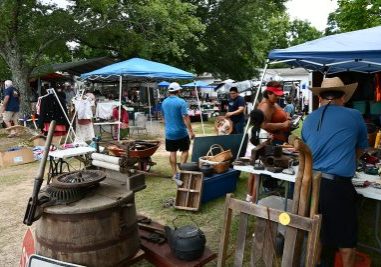From Ghost Towns to Boomtowns: The Impact of the Alabama Gold Rush
The Alabama Gold Rush, an often overlooked chapter in American history, played a significant role in shaping the state’s economy and the lives of those who inhabited the region. This gold rush, which began in the early 19th century, paralleled the more famous California and Georgia gold rushes but has been largely overshadowed by them.
The history of gold mining in Alabama dates back to the early 1800s when gold was discovered in the state’s northeastern region. The first documented discovery was made by John H. DeBardeleben, a farmer who found gold in the Chulafinnee Creek in 1830. This discovery sparked a wave of prospectors who rushed to the area in search of fortune.
Gold was found primarily in three areas of Alabama: the Goldville District, the Hog Mountain District, and the Chulafinnee District. These districts were located in the eastern part of the state, stretching from Clay and Tallapoosa counties to Cleburne and Randolph counties.
In the initial stages of the gold rush, miners employed simple methods like panning and sluicing to extract gold from rivers and streams. As more miners arrived, more advanced techniques were employed, including hydraulic mining and the use of stamp mills to crush gold-bearing rock and extract the precious metal.
The Economic and Social Impact of the Alabama Gold Rush
The influx of gold prospectors to the region had a profound impact on the native Creek Indians. As miners encroached on their lands, tensions escalated, eventually leading to the Creek War of 1836. This conflict resulted in the forced removal of the Creek Indians from Alabama to Oklahoma along the infamous Trail of Tears.
The Alabama Gold Rush attracted not only prospectors but also merchants, skilled laborers, and entrepreneurs who saw an opportunity to profit from the growing industry. Towns such as Goldville, Arbacoochee, and Cragford sprang up around mining operations, bringing with them a new level of economic prosperity to the region.
The use of enslaved labor was a significant aspect of the Alabama Gold Rush. Many mine owners brought enslaved people to work in the mines, leading to an increase in the demand for slaves in the region. The exploitation of enslaved labor played a crucial role in the growth and development of the gold mining industry in Alabama.
By the late 1840s, the Alabama Gold Rush had begun to wane. The easily accessible deposits of gold had been exhausted, and the remaining deposits required more advanced and expensive techniques to extract. The discovery of gold in California in 1848 also diverted many prospectors away from Alabama, hastening the decline of the state’s gold industry.
The outbreak of the Civil War in 1861 further hindered Alabama’s gold mining industry. Many miners enlisted in the Confederate Army, while others had their operations disrupted by the war effort. In addition, the Union blockade of Southern ports hampered the export of Alabama gold, causing the industry to languish.
After the Civil War, some gold mining operations resumed in Alabama, but the industry never fully recovered. By the early 20th century, most commercial gold mining in the state had ceased. Today, only small-scale, recreational gold prospecting takes place in Alabama.
The Economic and Environmental Impact of the Alabama Gold Rush
Although the Alabama Gold Rush may not be as well-known as its counterparts in California and Georgia, its impact on the state’s history and development cannot be underestimated. Beginning in the early 1830s, the discovery of gold in Alabama sparked a rush of prospectors eager to strike it rich. These hopeful miners flocked to the state, creating new communities and driving economic growth.
As more and more gold was discovered in the state, mining became a major industry. Prospectors worked tirelessly to extract as much gold as possible, often using primitive tools and dangerous techniques. The demand for labor led to the creation of new jobs, and miners and their families settled in the area, building homes, schools, and other community infrastructure.
The impact of the Alabama Gold Rush was felt not only in the creation of new communities, but also in the transformation of the state’s landscape. As miners dug into the earth in search of gold, they changed the shape of the land and altered the natural environment. Some of the scars of this mining activity can still be seen today in the form of abandoned mines, tailings piles, and other reminders of the rush for gold.
Despite the challenges of mining, the Alabama Gold Rush left a lasting legacy that continues to shape the state today. The rush brought new people, new ideas, and new economic opportunities to the region, spurring growth and development that still echoes through the state’s history. Today, Alabama remains a place where the spirit of the gold rush lives on, attracting prospectors and tourists alike who are eager to explore the state’s rich history and potential for discovery.






